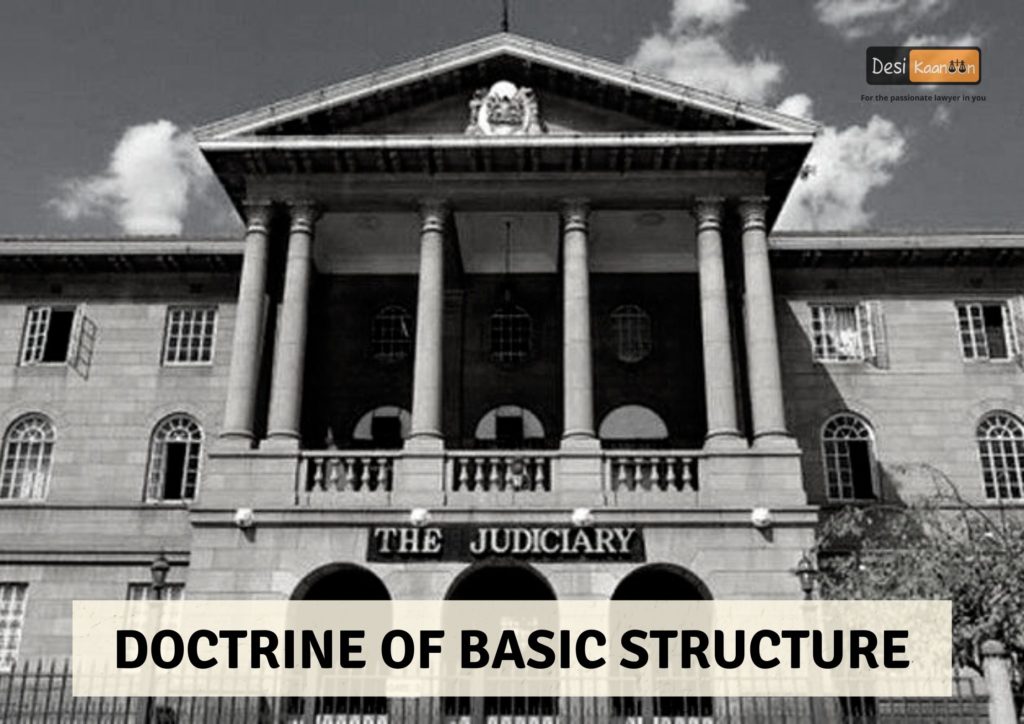Anadi Tewari
In a significant verdict with regard to Kenyan Constitution, the High Court of Kenya has ruled that the doctrine of Basic Structure is applicable in Kenya. This doctrine limits the amending power of parliament provided under Articles 255 to 257 of the Kenyan Constitution.
The High Court was hearing a batch of eight Constitutional petitions which challenge, in some fashion, the Building Bridges Initiative (BBI) and the resulting Constitution Amendment Bill and its associated Popular Initiative.
Arguments raised by the Petitioners
The petitioners argued that the amendment powers reposed in Article 256 and Article 257 of the Constitution of Kenya can only be used to amend the “ordinary provisions” of the Constitution and do not extend to the power to “destroy the Constitution nor does it include the power to establish a new form of government or enact a new Constitutional Order.”
The petitioners argue that the Doctrine of Basic Structure and the corollary doctrines of constitutional unamendability and eternity clauses operate in Kenyan Constitution to prevent such a possibility.
“The role of Parliament to protect the Constitution against tainted amendment bills and that the Court has the role to declare a constitutional amendment unconstitutional in the event Parliament fails in its role,” the petitioners contended before the Court.
The petitioners had drawn their primary authority for argument from the Indian case of Kesavananda Bharti v. State of Kerala and Another [(1973) 4 SCC 225] to emphasize their contention that when it comes to amending power of parliament, the Constitution itself provides some inherent limitation to that power.
Key Arguments raised by the Respondents
The respondents argue that the petitioner’s argument of application of basic structure in Kenya fails consider “the unique cultural, historical developed Constitutional norms and national identity of the Kenyan Constitution.”
In response to the authority of Kesavananda Bharti case (India) cited by the petitioners, the respondents stated that the decision of Kesavananda Bharti acknowledges the uniqueness of the Indian Constitution and the applicability of this doctrine within the Indian context, which is not at all similar to the Kenyan perspective.
The respondents had agreed that the Constitution of Kenya has a core that can be regarded as the basic structure.
“The Constitution has explicitly delineated that Basic Structure in Article 255 of the Constitution by signalling the provisions of the Constitution which cannot be amended without subjecting the proposed amendments to a referendum. The provisions listed in Article 255 of the Constitution as requiring a referendum before they can be amended are the provisions which form the Basic Structure of the Constitution. 462. It would be a subversion of the people’s sovereignty to declare that the people, acting in a referendum, or where allowed, through their representatives in Parliament, cannot amend any provisions of the Constitution. The power to amend, the Respondents insist, is part of the people’s sovereignty and is clearly spelt out in Articles 255-257 of the Constitution, the respondents argues.
Observation of the Court
The 5-judges bench of the High Court went on to observe and rule that:
a) That the Basic Structure Doctrine is applicable in Kenya.
b) That the Basic Structure Doctrine limits the amendment power set out in Articles 255 to 257 of the Constitution. In particular, the Basic Structure Doctrine limits the power to amend the Basic Structure of the Constitution and eternity clauses.
c) That the Basic Structure of the Constitution and eternity clauses can only be amended through the Primary Constituent Power which must include four sequential processes namely: civic education; public participation and collation of views; Constituent Assembly debate; and ultimately, a referendum.
Case: David NDII and Others v. Attorney General and Others [Petition No. E282 of 2020]

